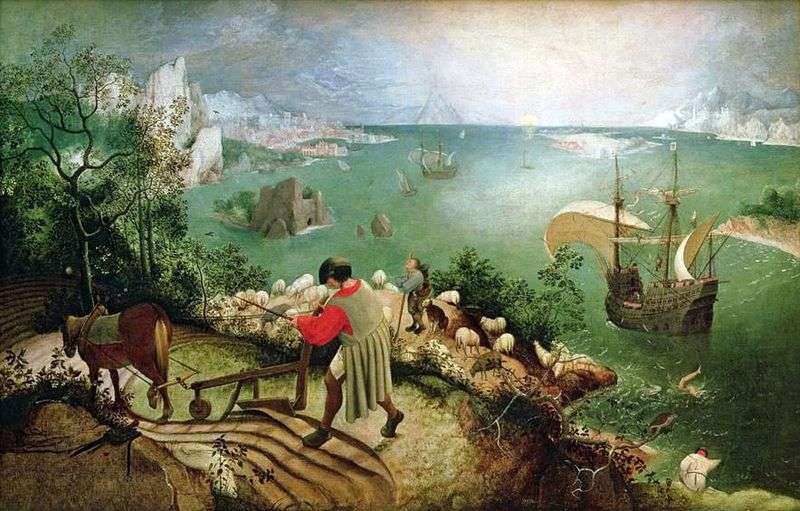
In 1957, Pablo Picasso, along with 11 more famous artists, including Joan Miro, Giacometti and others, received an invitation to paint a huge wall at UNESCO headquarters in Paris.
The artist took up the work with inspiration, and by January 1958, in the presence of the highest administration, presented 40 huge panels, with a total area of about 100 square meters. m painted in its unique style.
The panels are painted with acrylic paints. On the mural you can see the water surface, embodied in a bright blue color. Human figures, as usual with Picasso, are depicted in eccentric deformed poses – someone is stretched out, someone has spread his legs and arms, someone has crouched in a ball.
The most curious thing is that Picasso himself did not give the program name of his mural, referring the viewer to the famous mythological story about Icarus. In its original form, the painting was called “Forces of Life and Spirit, triumphant over Evil.” However, placed at headquarters, the painting began to live its own life, and was renamed. The new name – “The Fall of Icarus” turned out to be more durable than the original version, probably due to the fact that for the works of Picasso had long been accustomed to the viewer to look for in his canvases an encrypted meaning.
The great master himself, when asked about the meaning of the written, laughed off – they say, he just wrote to people on the beach where someone sunbathes, and someone bathes. His work involved the creation of meanings by the public itself, and he gave a rich basis for such searches.
Looking at the painting one can safely say that no matter what kind of work Picasso would accept, he always remained true to his style. Here and in the “Icarus Fall” read favorite spontaneity, improvisational, plasticity and creative impromptu.
 The Fall of Icarus by Peter Brueghel
The Fall of Icarus by Peter Brueghel Portrait of Olga in the chair by Pablo Picasso
Portrait of Olga in the chair by Pablo Picasso Weeping Woman by Pablo Picasso
Weeping Woman by Pablo Picasso Two women running along the beach by Pablo Picasso
Two women running along the beach by Pablo Picasso Houses on the Hill by Pablo Picasso
Houses on the Hill by Pablo Picasso Las Meninas by Pablo Picasso
Las Meninas by Pablo Picasso Nude Green Leaves and Bust by Pablo Picasso
Nude Green Leaves and Bust by Pablo Picasso Sleeping peasants by Pablo Picasso
Sleeping peasants by Pablo Picasso